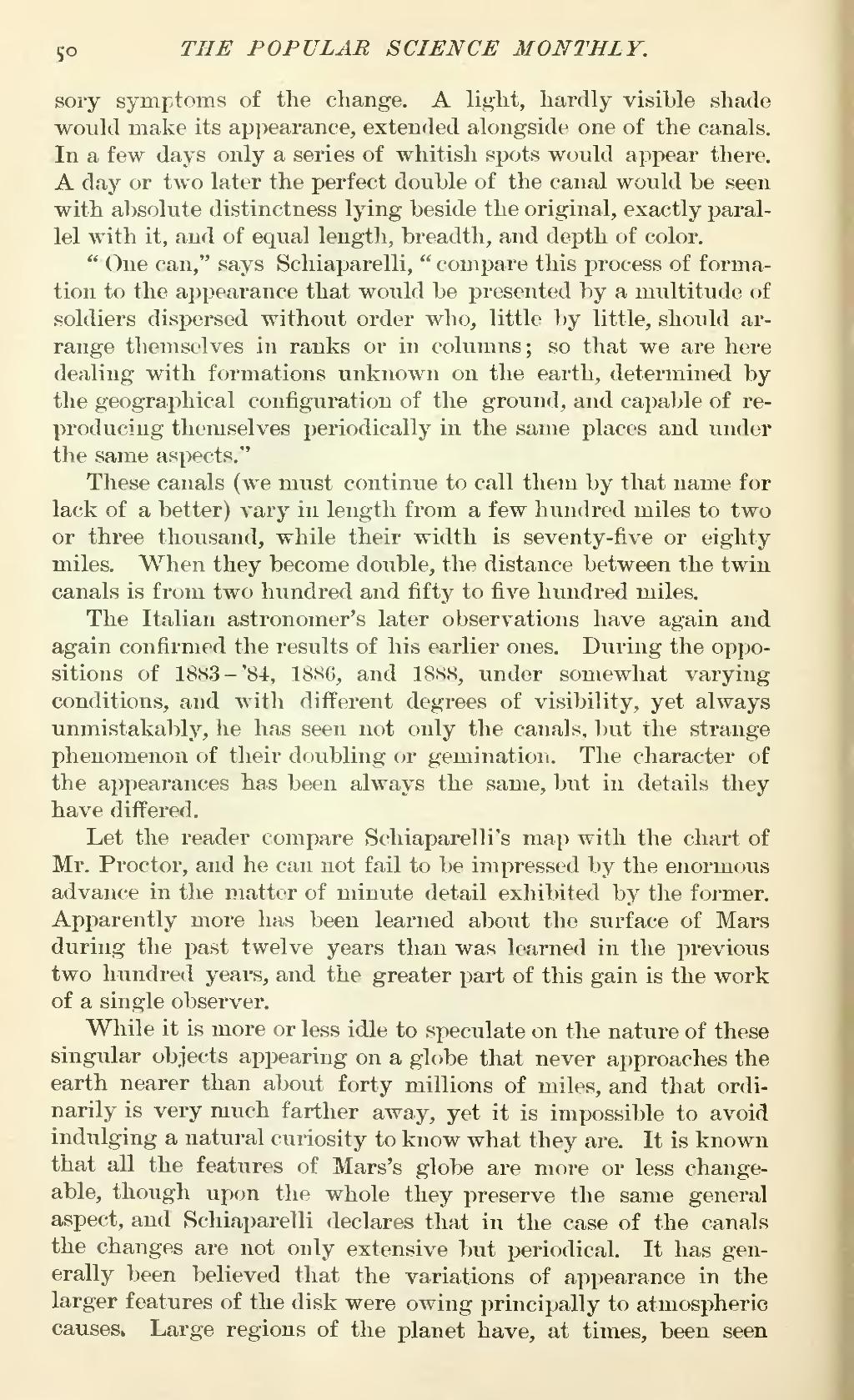sory symptoms of the change. A light, hardly visible shade would make its appearance, extended alongside one of the canals. In a few days only a series of whitish spots would appear there. A day or two later the perfect double of the canal would be seen with absolute distinctness lying beside the original, exactly parallel with it, and of equal length, breadth, and depth of color.
"One can," says Schiaparelli, "compare this process of formation to the appearance that would be presented by a multitude of soldiers dispersed without order who, little by little, should arrange themselves in ranks or in columns; so that we are here dealing with formations unknown on the earth, determined by the geographical configuration of the ground, and capable of reproducing themselves periodically in the same places and under the same aspects."
These canals (we must continue to call them by that name for lack of a better) vary in length from a few hundred miles to two or three thousand, while their width is seventy-five or eighty miles. When they become double, the distance between the twin canals is from two hundred and fifty to five hundred miles.
The Italian astronomer's later observations have again and again confirmed the results of his earlier ones. During the oppositions of 1883-'84, 1886, and 1888, under somewhat varying conditions, and with different degrees of visibility, yet always unmistakably, he has seen not only the canals, but the strange phenomenon of their doubling or gemination. The character of the appearances has been always the same, but in details they have differed.
Let the reader compare Schiaparelli's map with the chart of Mr. Proctor, and he can not fail to be impressed by the enormous advance in the matter of minute detail exhibited by the former. Apparently more has been learned about the surface of Mars during the past twelve years than was learned in the previous two hundred years, and the greater part of this gain is the work of a single observer.
While it is more or less idle to speculate on the nature of these singular objects appearing on a globe that never approaches the earth nearer than about forty millions of miles, and that ordinarily is very much farther away, yet it is impossible to avoid indulging a natural curiosity to know what they are. It is known that all the features of Mars's globe are more or less changeable, though upon the whole they preserve the same general aspect, and Schiaparelli declares that in the case of the canals the changes are not only extensive but periodical. It has generally been believed that the variations of appearance in the larger features of the disk were owing principally to atmospheric causes. Large regions of the planet have, at times, been seen
